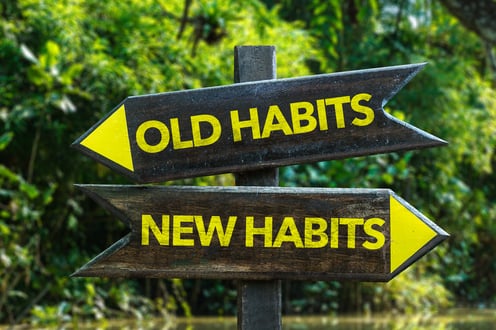With age comes wisdom, or so they say. Unfortunately, it also comes with an increased risk of certain types of diseases like diabetes. Living with diabetes, while it can be effectively managed, can be tough at times. Every day is a new hurdle with unique challenges that people must jump over. As we get older, jumping over those hurdles can become a bit more challenging, however, you may be able to sustain it better with reasonable changes. One of those simple changes is eating habits.
For most of us, the need to make dietary changes will occur during the aging process. Most people recall when they could “eat anything” but now they can’t because their body has changed in the way it processes the food. Gas, fat, GERD the changes can come in many formats. Some seniors will also develop type II diabetes and need to make changes to their diet.

Aging and Diabetic Dietary Changes
Dietary needs evolve as people age, and seniors need to know how to manage those changes to maintain physical health and wellness. Older adults need to take an active role in shaping their diet and nutrition habits to ensure more energy, better disease prevention, and quality of life.
Seniors should consult their physician to discuss their individual needs. Healthcare professionals can also help seniors and their families create and implement healthy eating plans.
When it comes to diabetes the main finding? Everyone's body responds differently to different types of foods and diets, so there is no single "magic" diet for diabetes. But you can follow a few simple guidelines to find out what works for you to help manage your blood sugar. There is also the “plate method” that diabetics can utilize in trying to get the proper mix of food. Diabetics should remember to follow good practices to control their diabetes. Self-testing your blood sugar (blood glucose) can be an important tool in managing your diabetes and preventing complications. Be sure to listen to your doctor and follow their advice.
Eating plans often include:
- Increased protein and fiber intake. Protein and fiber are important nutrients for seniors. Foods high in fiber can help maintain healthy digestive systems as we age and increasing protein intake can help seniors increase or maintain energy and strength.
- Whole grains have multiple benefits. Whole grains are also fiber-rich foods that not only aid the digestive process but promote healthy hearts for seniors. Cereal, rice, and bread made with whole grains can easily be found at any grocery store and provide several serving choices to meet recommended daily requirements.
- Calcium is a key component in maintaining bone strength. Calcium can help prevent osteoporosis, especially when calcium intake is consistent. Preventing osteoporosis is critical for seniors – especially those that are at risk for falls. Calcium also helps us absorb nutrients better.
- Hydration is critical at any age. Physical changes that occur with age make hydration even more important for older adults. For those that are less inclined to drink water, there are alternatives – milk, juice and broth are all hydrating liquids, and there are hydrating foods including watermelon, cucumbers, and grapes.
If engaging in good eating habits is a struggle, there are steps seniors can take to ensure that they are getting proper nutrition. In addition to consulting a physician about diet or health concerns they might have, they can also try the following tactics to get back on the right track:
- Make meals a social occasion– Sharing a meal is one of the most enjoyable ways to ensure that someone is eating well. This can include making something healthy and delicious for others or reaching out to people that love to cook healthy food and offering them some company at mealtimes.
- Make healthy eating fit your budget– Good food doesn’t have to be expensive. A doctor or nutritionist can point patients to budget-friendly, nutritious food options. Maintaining a healthy lifestyle saves money on medical care in the future.
- Shop for healthy foods– Having a kitchen stocked with healthy snacks and meal options is one of the most important steps to maintaining a balanced diet.
- Encourage people to ask for help– If someone has concerns about their ability to plan healthy meals, shop for the groceries or if they just aren’t getting the nutrition they need, tell them to ask for help! In-home caregivers, delivery services, family, friends, and medical professionals can all help older adults reach their nutrition goals.
Making small changes and involving other people can make healthy changes more sustainable. When you enjoy exercise or sharing a good meal with a friend or relative it becomes fun and part of a healthier lifestyle.
References
Mayo Clinic. “Senior health: How to prevent and detect malnutrition.” Web. 2017.
Next Avenue, “Malnutrition is Affecting Too Many Older Adults.” Web. 2016.
Public Health Post. “Malnutrition in Older Adults.” Web. 2017
Healthline. “How Your Nutritional Needs Change as you Age.” Web. 2017.
American Diabetes Society





